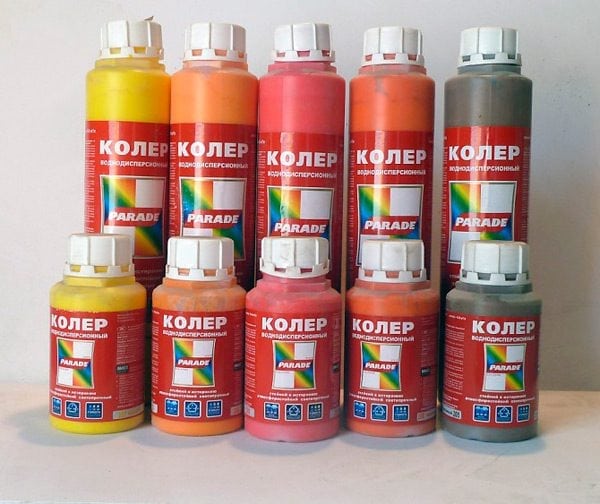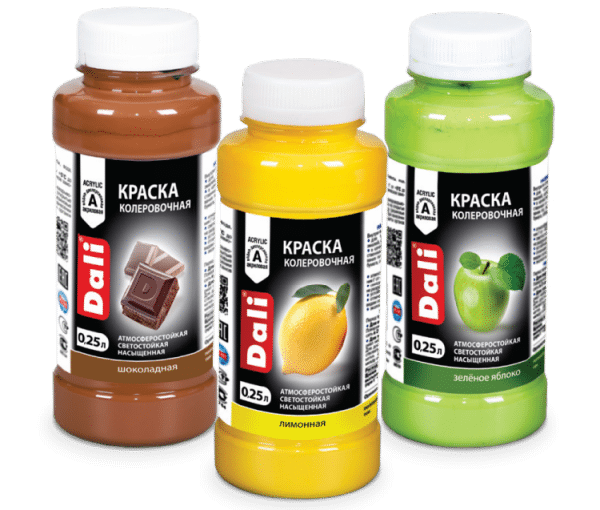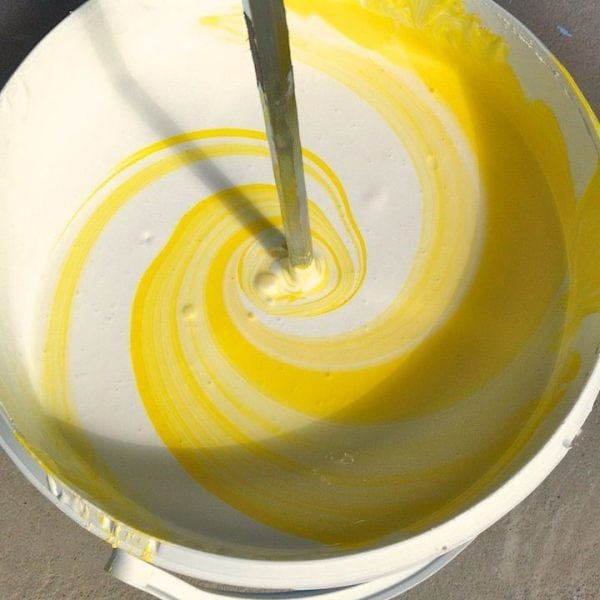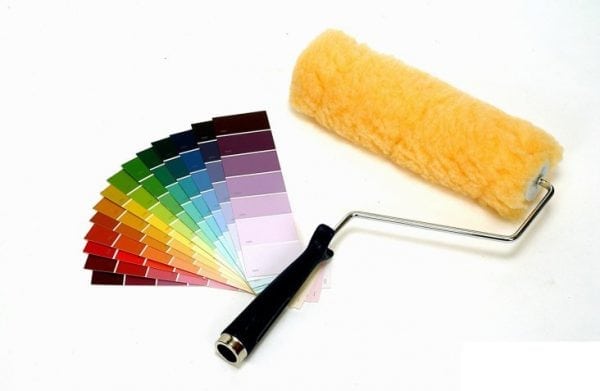Water-based dyes are very convenient to use, dry quickly and are presented in a wide color palette, allowing the master to choose the right color. But sometimes it happens that the desired color shade is not on sale or some unusual complex color is required. To obtain the necessary color gamut, it is necessary to use a color scheme for water-based paint.
- Tips for choosing tinting mixtures
- Useful Tips
- How to work with tinting concentrate
- How to calculate the required flow
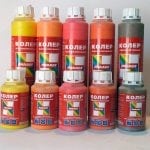
Tips for choosing tinting mixtures
Choosing the right color concentrate, you need to consider what composition of the aqueous emulsion suspension will be tinted. The composition of the dyes can be:
- glue;
- on a latex basis;
- water dispersion.
You can choose a tinting tone for them, taking into account the constituent of the base, or choose a universal one suitable for all types of aqueous acrylic paints.
In addition to the main component, when buying, you must consider:
- How much tinting concentrate is required per 1 kg of dye, and purchase it immediately in the required quantity. It may happen that then the desired color will not be on sale and you will either have to postpone the repair for an indefinite time, or do tinting, choosing the tone using the method mixing different color combinationsas the art mix table suggests.
- That the color for water-based paint, produced by different manufacturers, may vary in shade. You need to purchase a tool for tinting one brand.
- Before buying, it is advisable to study the catalog from the manufacturer, which clearly indicates the color that matches the shade of the purchased concentrate. In addition, the catalog should indicate the required amount of tint per 1 kg of material to obtain the desired tone.
- In the case when there is a need to create a complex color tone, it is recommended to use a table from manufacturers of tinting mixtures of this brand. It is with the help of such tables that you can determine the necessary color combination based on 1 kg of material.
- From containers it is better to purchase bottles with a narrow neck - this shape of the container allows you to conveniently dispense the coloring composition.
The ink base should be pure white without the yellowish impurities inherent in most white dyes. Yellowing pigments during tinting will prevent you from getting the right shade. For example, if there is a small amount of yellow pigment in the starting material, adding red does not give the desired red, but a reddish-orange tint.
to contents ↑Useful Tips
Already everything you need for tinting with your own hands has been selected and purchased. Before you start working, creating a suitable tint tone, it is worth considering several recommendations that will contribute to successful tinting:
- The resulting coloring composition looks different in the light of different lamps. Coloring should be in the room where the walls will be painted to get the desired result.
- A large painted area due to the play of light visually looks a bit darker than a small painted sampler. This nuance must be taken into account when you have to additionally dilute the paint product.
- The tinting concentrate should be added dropwise, thoroughly mixing the resulting mixture until a uniform color combination is obtained.If you immediately pour too much concentrated dye solution, you can spoil the source material with too much color saturation.
- If additional tinting is carried out with a concentrate of another company (for example, there was not enough tinting mixture, and the desired brand was not in the store), then the material consumption for obtaining the desired color combination may differ from the previously performed calculations from the consumption per 1 kg of base. In this case, it is better to make a test mixture in a small container, carefully comparing the result with that made earlier. For reference, it is recommended to use the previous probe, because on the wall the paint looks a little different.
The final result after painting depends not only on how well you managed to make the necessary colors with your own hands, but also on how homogeneous the mixture will be after tinting.
Stirring in a large container is recommended to be done with a drill, installing a special paint nozzle on it.
It is necessary to start mixing from small revolutions, gradually increasing them and making sure that the solution does not splatter.
It is recommended that you check the resulting homogeneous mixture before applying it to the surface to be decorated using a probe. This must be done due to the fact that with a successful dilution result in a small bowl and when calculating the amount of tint per 1 kg of the main dye, there could be inaccuracies. Following these simple tips, you can get an excellent result when tinting.
to contents ↑How to work with tinting concentrate
Perhaps someone has long been working with such mixtures and has its own secrets on how to get an excellent result. But for beginners who are only mastering how to make tinting with their own hands, it is recommended to observe the following steps in the work:
- Prepare small containers (suitable plastic jars of sour cream or other products), a measuring container and brushes.
- Wash and dry all materials thoroughly.
- Pour a little white water emulsion into the measuring container (the volume must be written down - these data will be useful for calculating when a large volume of dye will be prepared). From a measuring cup, the paint is poured into a plastic jar.
- Now a tinting concentrate is added dropwise to the white color. After each drop, the composition is thoroughly mixed until a homogeneous mass is obtained. It is very important to count the number of drops, because this figure is useful for further calculations.
- When the achieved result was satisfactory, it is applied to the probe and left for a day. You can paint a square 50x50 cm on the wall, which is supposed to be painted. This method for tinting with your own hands is convenient in that it allows you to evaluate the result in daylight and electric lighting. Perhaps the resulting color combination on the wall will look very different and slightly different from what was in the jar.
- The next day, you can evaluate what was achieved during the mixing. If the tone is suitable, then you can make the necessary calculations, breed large volumes of material and begin to decorate.
How to calculate the required flow
The formula for repeating your favorite tone is very simple.. In order to calculate the required ratio, proceed as follows:
- Take the results of mixing, because it was not in vain that the amount of water emulsion was measured, and the drops added to it were calculated.
- Enlarge data in proportion to large volumes. For example, 100 drops took 5 drops per 100 ml, respectively, 50 drops per 1 liter.
- Now we subtract 20% from the resulting number of droplets. This is necessary because large areas, as mentioned above, look brighter. So, a liter will require 45 drops.
In a similar way, you can cook complex color shades.
By approaching the process creatively and following the above recommendations, you can get great color combinations for the design of the room.

